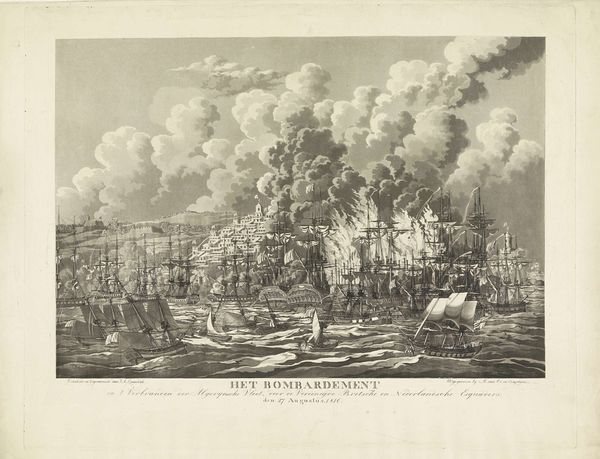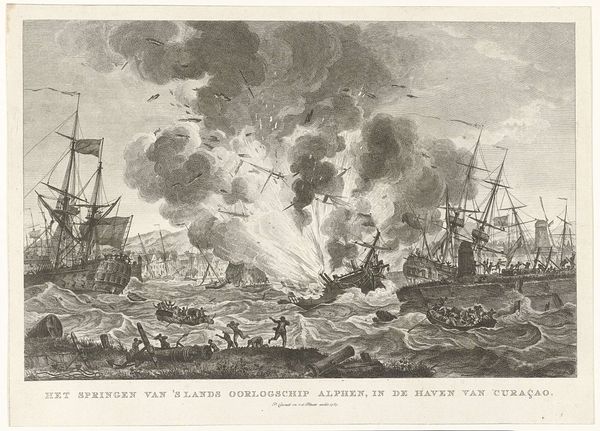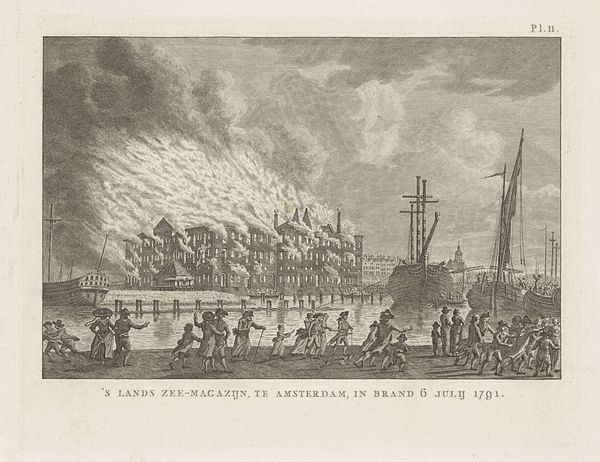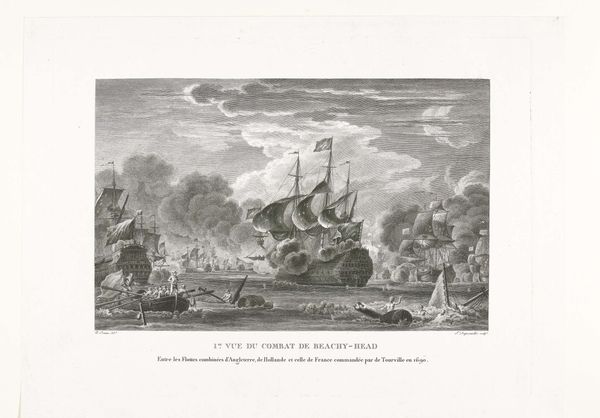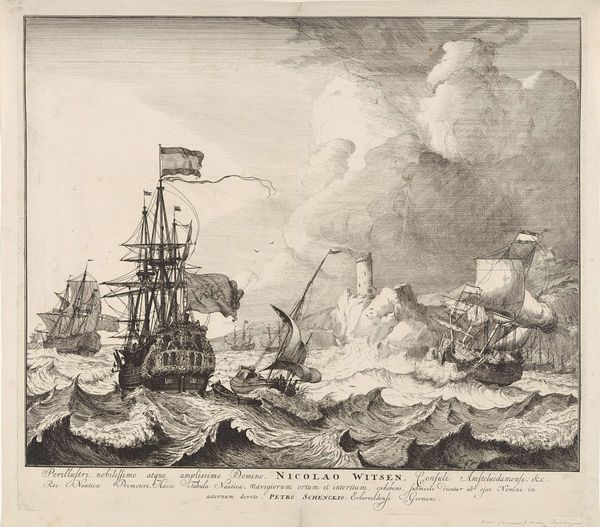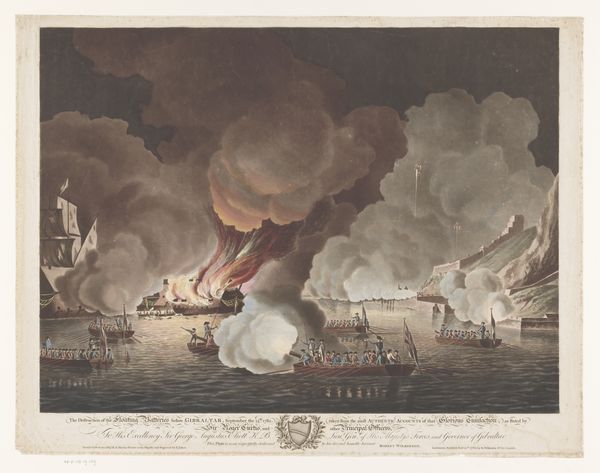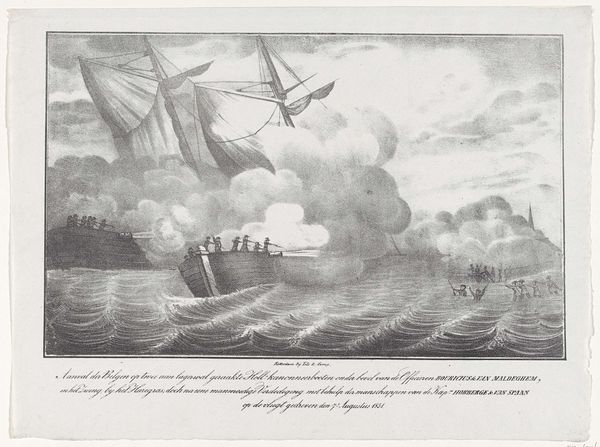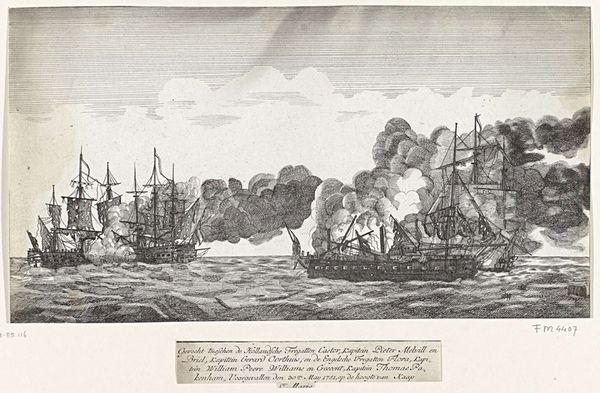
Dimensions: height 205 mm, width 277 mm
Copyright: Rijks Museum: Open Domain
Curator: This image grabs you instantly with its stark, monochrome palette and dramatic central explosion. There's something chaotic yet undeniably compelling about its composition. Editor: Indeed. What we’re looking at is a print entitled "Ontploffing van de admiraliteitsjacht te Rotterdam, 1790," which translates to "Explosion of the Admiralty Yacht in Rotterdam, 1790". It's attributed to an anonymous artist and dates to 1791, so shortly after the actual event. The medium is engraving, a common way to disseminate images at that time. Curator: The explosion itself dominates the scene. Notice how the artist uses hatching and cross-hatching to create a dense cloud of smoke and debris. It's quite effective in conveying the sheer force of the blast. The lines around it speak of water upheaving. Editor: This explosion speaks volumes about the political instability in the Netherlands towards the end of the 18th century. The explosion, while not explicitly linked to a political cause within the engraving, happened amid growing tension between the Patriots, who sought democratic reforms, and the Orangists, who supported the Stadtholder. Rotterdam was a hotspot for Patriot activity, the print potentially memorializes anxieties around state authority. Curator: From a formal standpoint, the cityscape in the background offers a compelling counterpoint to the chaos in the foreground. Its stable verticals anchor the image. And you see echoes of Baroque drama within this image. The composition, while appearing chaotic, is structured to guide the eye through the spectacle, with strong diagonals leading toward the blast. Editor: These clean architectural renderings are also important. They place the tragedy within the very life and business of the city. Rotterdam would've felt this loss. Note too the figures in the boats; they’re the implied spectators, both threatened by and in awe of the yacht's explosion. This represents ordinary people and how warfare impacted society in general, beyond military or political objectives. Curator: Ultimately, the engraving achieves a visual record—an image capturing the precise instant of total destruction through sharp details and dense engraving. Editor: Yes, but I will take with me the implications of that moment and how power is wielded with consideration to the historical moment, rather than just the pure visual impact.
Comments
No comments
Be the first to comment and join the conversation on the ultimate creative platform.
